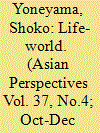|
|
|
Sort Order |
|
|
|
Items / Page
|
|
|
|
|
|
|
| Srl | Item |
| 1 |
ID:
191371


|
|
|
|
|
| Summary/Abstract |
Greener alternatives for fuelling automobiles, such as hydrogen transport and electric vehicles, have shown considerable promise in transportation. Many others are sceptical of the growing enthusiasm for these new technologies, believing that energy storage technologies and management are insufficient for a complete shift. Such a network of variables and smart grid technologies that can help with the transition may reveal some systemic hazards linked with financial institutions, company risk and failure, and so on. This study attempts to characterise spillovers and connections between the indices of green transportation, smart grid, innovative materials, energy storage, and energy management globally. To do this, we employ a novel strategy developed by Balcilar et al. (2021) as well as a robustness check using the well-known Diebold and Yilmaz (2012) method. The study highlights the sub-systemic sector's connections, giving policymakers insights into instruments to support financial market sustainability and stability. It would be critical to separate the impact of these indicators, but given the intrinsic relationship, this would be nearly impossible. The transportation innovation network is not rigid and established in its interconnection. The role of indicators shifts from transmitting to absorbing shocks regularly, and policymakers who want to encourage long-term solutions must be aware of this.
|
|
|
|
|
|
|
|
|
|
|
|
|
|
|
|
| 2 |
ID:
192766


|
|
|
|
|
| Summary/Abstract |
Greener alternatives for fuelling automobiles, such as hydrogen transport and electric vehicles, have shown considerable promise in transportation. Many others are sceptical of the growing enthusiasm for these new technologies, believing that energy storage technologies and management are insufficient for a complete shift. Such a network of variables and smart grid technologies that can help with the transition may reveal some systemic hazards linked with financial institutions, company risk and failure, and so on. This study attempts to characterise spillovers and connections between the indices of green transportation, smart grid, innovative materials, energy storage, and energy management globally. To do this, we employ a novel strategy developed by Balcilar et al. (2021) as well as a robustness check using the well-known Diebold and Yilmaz (2012) method. The study highlights the sub-systemic sector's connections, giving policymakers insights into instruments to support financial market sustainability and stability. It would be critical to separate the impact of these indicators, but given the intrinsic relationship, this would be nearly impossible. The transportation innovation network is not rigid and established in its interconnection. The role of indicators shifts from transmitting to absorbing shocks regularly, and policymakers who want to encourage long-term solutions must be aware of this.
|
|
|
|
|
|
|
|
|
|
|
|
|
|
|
|
| 3 |
ID:
177827


|
|
|
|
|
| Summary/Abstract |
This article assesses the spillover effects between terrorist activity and Spanish stock market returns for the period 1993–2017 . We construct a daily terror index that reflects the terrorist activity of different types of perpetrators: domestic terrorism (ETA) and international terrorism linked to Islamic extremism. Our static analysis shows that connectedness is important, as it explains about half of the forecast error variance; most of it is attributed to shocks from terrorist events on stock market return forecasts. Our dynamic analysis also uncovers an increase in spillover effects between the early period characterised by ETA terrorist attacks and the recent past characterised by Islamic terrorist attacks.
|
|
|
|
|
|
|
|
|
|
|
|
|
|
|
|
| 4 |
ID:
124595


|
|
|
|
|
| Publication |
2013.
|
| Summary/Abstract |
The human and ecological disasters of Minamata and Fukushima highlight Japan's need to plan for a sustainable future. Ogata Masato, a Minamata fisherman, through his philosophy of "life-world" suggests that this quest for a sustainable future requires a change in the epistemology of social science. His philosophy offers a postmodern version of Japan's heritage of animism, where humans are connected with all living beings, including the souls of the living and the dead, as well as animate and inanimate entities in nature. His philosophy thus presents an alternative framework for a new modernity.
|
|
|
|
|
|
|
|
|
|
|
|
|
|
|
|
| 5 |
ID:
176587


|
|
|
|
|
| Summary/Abstract |
This paper focuses on volatility spillover effects and considers the issue of how to measure the connectedness of networks among financial firms. To assess the network connectedness of firms from different industries, we proposed a novel procedure and applied it to 20 leading financial institutions from four industries in China's stock markets. The results show that the total connectedness of the Chinese financial system was much higher during the stock market crisis between June 2015 and February 2016 than during stable periods of economic development. This analysis can be used to determine which firms play a dominant role in risk transmission throughout the entire system. It is suggested that the government should provide targeted regulatory policies to particular types of firms.
|
|
|
|
|
|
|
|
|
|
|
|
|
|
|
|
|
|
|
|
|